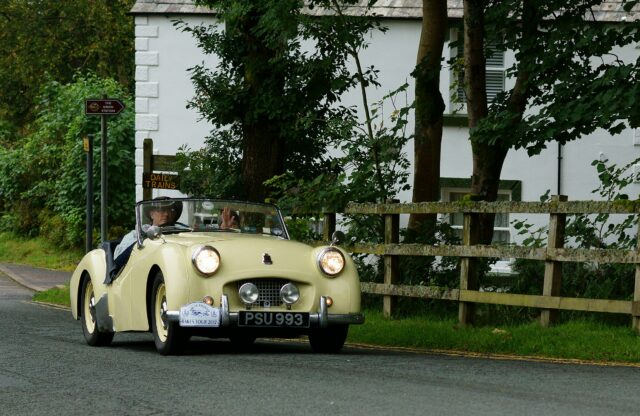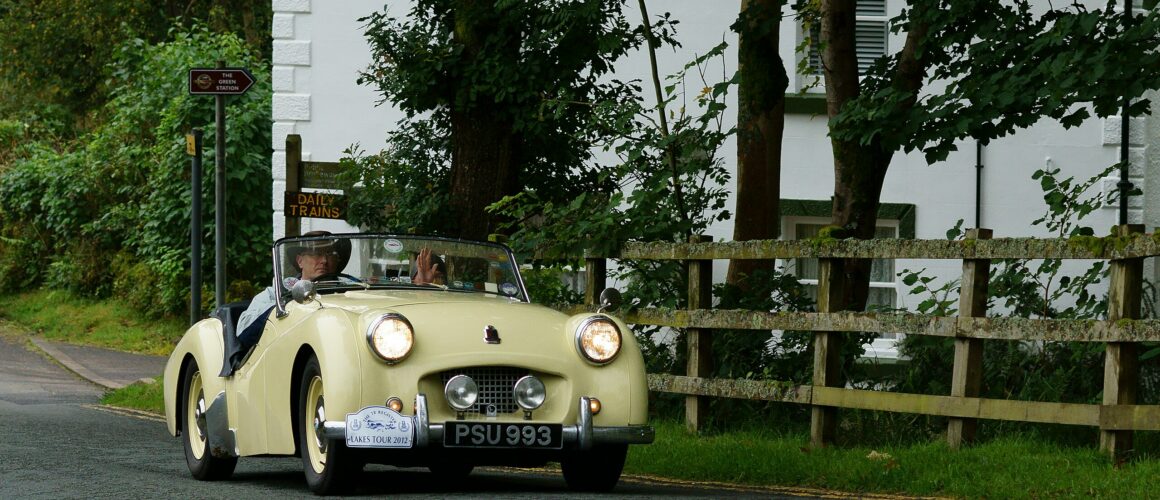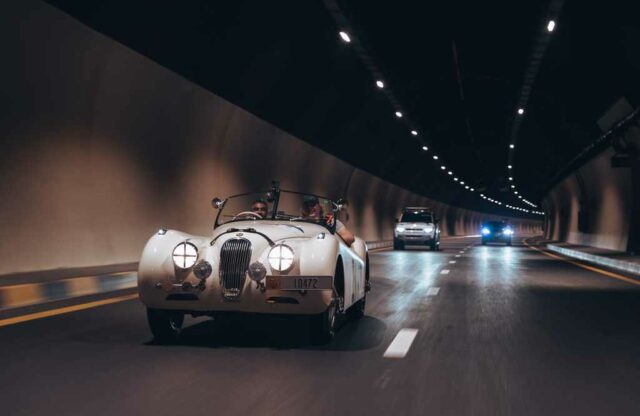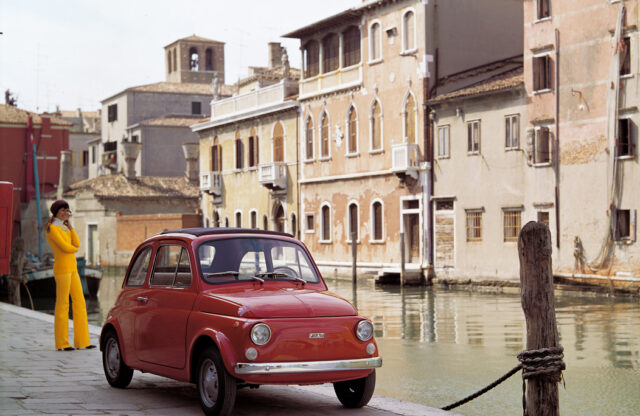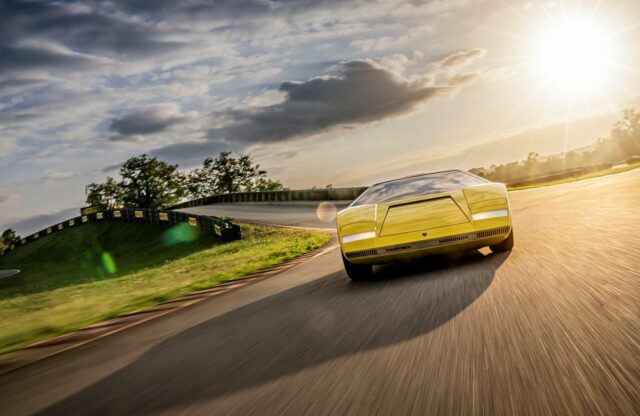As first attempts go, Triumph’s 20TS/TS20 (known retrospectively as the TR1) wasn’t the most successful. Strictly speaking, it wasn’t even Standard-Triumph’s maiden voyage; after three years of post-war development, the TRX, a rebodied Roadster, amounted to nothing. By 1950, the firm had zero to show for its efforts – and boss Sir John Black watched as MG gained an increasing hold on export markets. Its cars were flying out of US dealers, and the 20TS/TS20, it was hoped, would take the fight back to Triumph.
Alas, the Walter Belgrove-styled car – revealed at the 1952 Earls Court Motor Show – had, despite its rakish looks, been rushed to the stand on a tiny budget on the direct orders of Sir John Black – and it showed. Erstwhile BRM Grand Prix driver Ken Richardson, drafted in to test the prototype, dubbed the car a “death trap”.
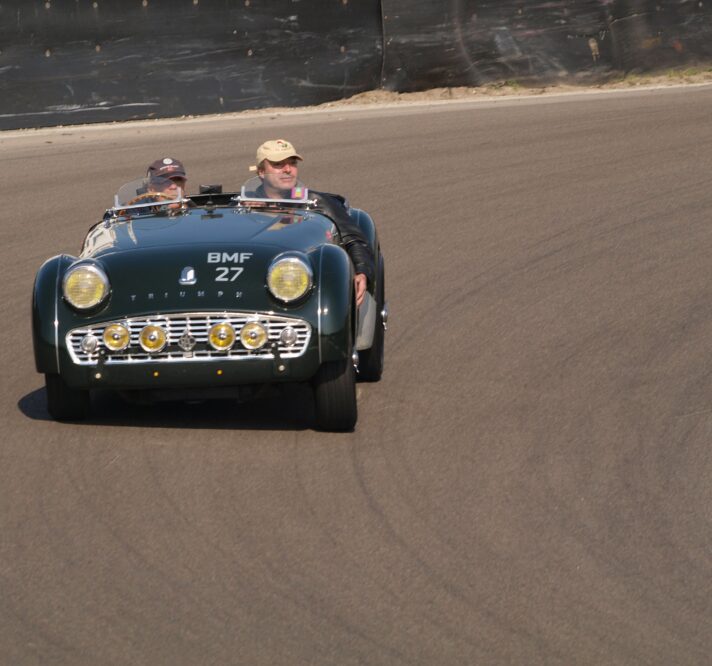
So beloved was the TR3A that the TR3B was created in 1962 to run concurrent with the then-unpopular TR4
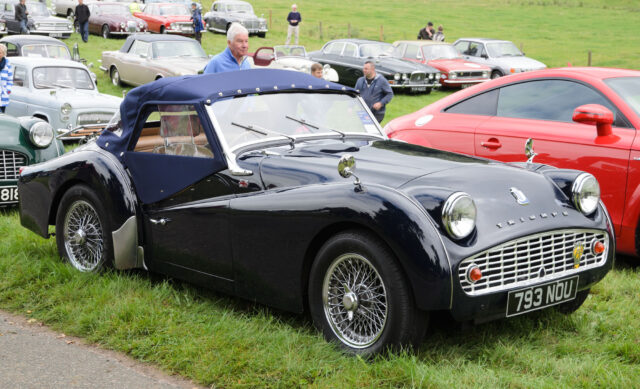
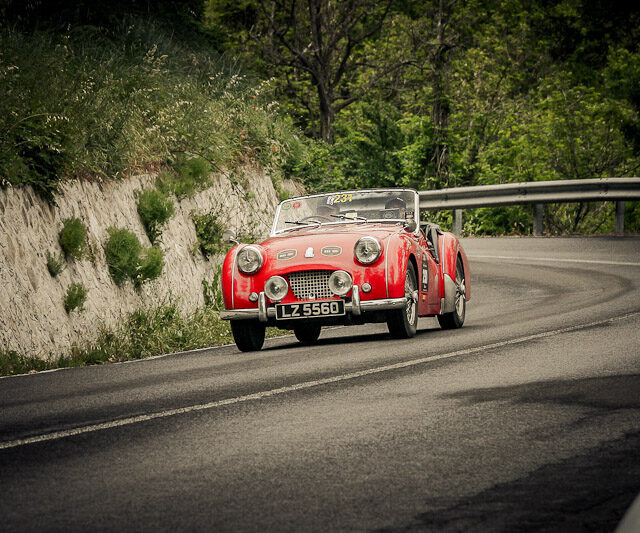
Not wanting to give up on the 20TS, Standard-Triumph employed Richardson to re-engineer it. He and Belgrove reworked the car, and with a year’s worth of effort from the works, the TR2 was born.
The 1953 Geneva Motor Show welcomed the newcomer, which quickly proved itself during high-speed runs at Jabbeke and class wins at Le Mans. Winning the 1954 RAC Rally helped, too. After modest sales success, the TR2 morphed into the TR3 by 1955; carburettor and head tweaks saw its 2.0-litre engine break 100bhp. By 1956, Girling front disc brakes were fitted – a sensation in a mass-produced car, even if the 1948 Crosley Hotshot, of which just 3000 or so were built, used them first.
So-called ‘small-’ or ‘narrow-mouth’ cars lasted until 1957, when the unofficially named (and restyled) ‘wide-mouth’ TR3A appeared – and sales shifted up a gear. So beloved was the TR3A that the TR3B was created in 1962 to run concurrent with the then-unpopular TR4. Retaining the TR3A’s body, the B shoehorned the 2.1-litre four from the new car into its predecessor for a total of 3331 units.
Spares availability for the TR2 and TR3 is excellent. “It’s not quite in the MGB or E-type’s league, but it’s not far off,” says Simon Watson, director of TR Enterprises.
ENGINE AND GEARBOX
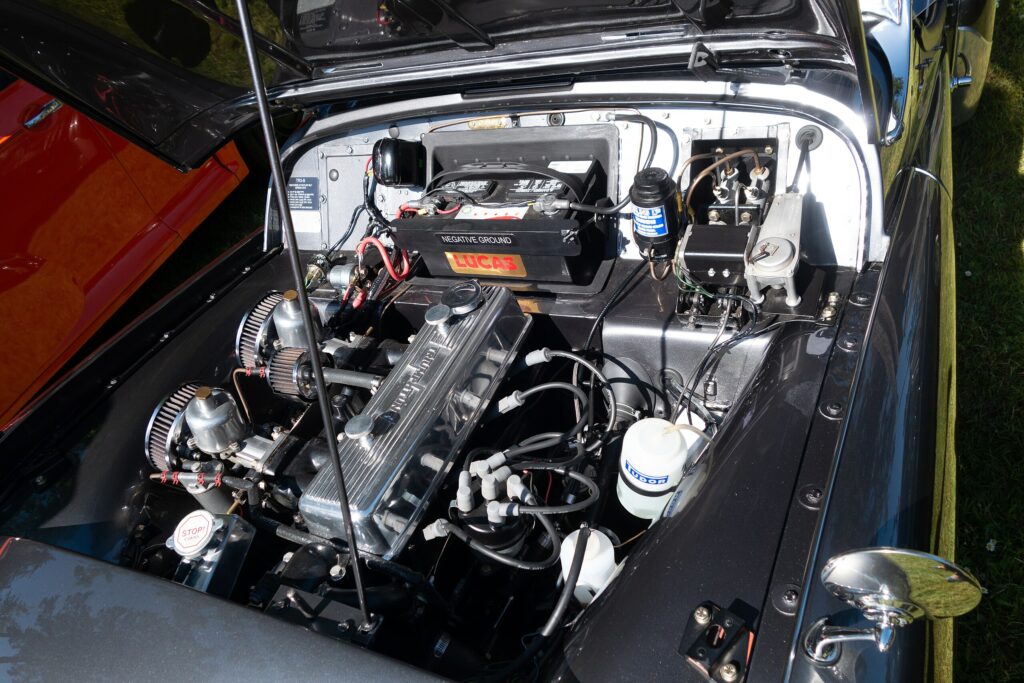
TR3B aside, we’re dealing with the same 2.0-litre Standard-Triumph engine, save for factory revisions, carburettor upgrades or ancillary changes. Good oil pressure is the key to diagnosing a healthy motor – but all the parts needed are available new or used. Everything that applies to the 2.0-litre can also be considered for the TR3B’s 2.1.
“Rattles or rumbling is a bad sign,” says Simon. “These engines smoke if the rings are worn; if it has less than 25psi idling, it wants attention.” Look for 50psi-plus cold, and 25psi-40psi warm; any less suggests worn big-end bearing shells, a crankshaft in need of a regrind or a dodgy oil pump.
Derived from Standard Vanguard and Ferguson TE tractor units, the TR2/3 motor is of overhead-valve design; rocker tips and shafts can wear, but it’s not too hard to sort: “There’s no weakness per se in the engine, it is all down to age and maintenance. They will do stellar mileages with regular oil changes,” Simon says.
Cylinder-liner heights are crucial to a motor rebuild; as a wet-liner (pull-out) configuration, it’s critical that these are of correct and level height, otherwise blown head gaskets can result. Heads can crack, but new ones are available – at a cost.
TR2s, ’3s and ’3As lack synchromesh on first gear – a crunching here is nothing to worry about. The 3Bs use the TR4’s fully synchro ’boxes, and many cars have had these retro-fitted. Overdrive was an option, especially on (often now less rusty) exports; Laycock de Normanville’s A-type was used. A desirable extra, they remain hardy if serviced – but if a non-overdrive car has been converted, check the speedo-cable mounting. Later J-type units have also been installed in these cars, but again the quality of the conversion is key.
SUSPENSION AND BRAKES

“The rubber suspension bushes can crack and become less compliant, especially if the car has been left,” Simon explains. Upper links screw into a brass-trunnion outer joint, which can wear if the correct maintenance hasn’t been carried out.
Springs and lever dampers will wear commensurate with the age of the car and how hard it’s driven; the latter can easily be reconditioned. At the rear, it’s a similar story – don’t worry about the leaf springs, but do check their rubber mountings.
“These are not particularly heavy cars, so the springs don’t have that much to do. Normally the shackle and eye bushes will need attention first,” Simon says. Again, everything you’ll need is available.
Brakes are relatively straightforward to look after; the cars never ran a servo: “A well maintained all-drum set-up works well; the problem [for first-time owners] is getting used to the fade,” Simon says. Almost all components can be bought off the shelf, apart from backing plates – but the used market has this covered. Many owners convert from drums to discs, thus leaving backing plates available to buy.
BODYWORK AND INTERIOR
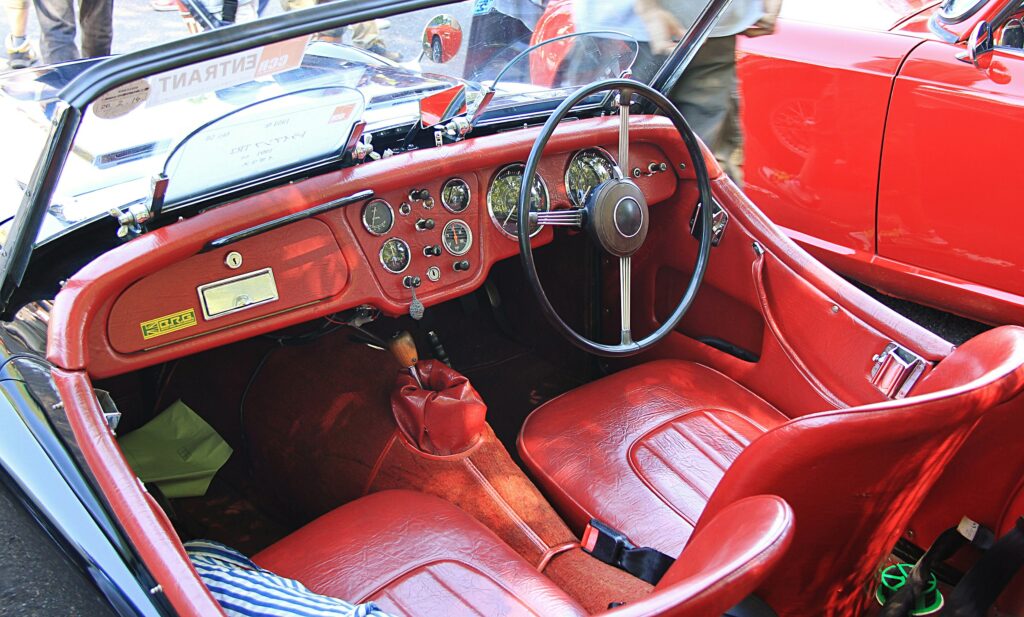
The TR2 and 3 were separate chassised – which makes completing a full restoration to a high standard a body-off affair.
“The relatively simple chassis rots more at the back,” says Simon. “The front tends to be coated in engine and ’box oil. Repairs are straightforward; crash damage is the worst issue, but it can be ‘jigged’ straight.”
A really bent chassis will betray its presence with badly fitting body panels; again, secondhand and new chassis can be purchased: “The chassis from the TR2 to the TR3A was virtually identical, with just a few tiny differences,” Simon explains.
Panels were steel after a short run of early TR2 aluminium bonnets and bootlids were easily damaged in service. Optional hard-tops were steel; new reproductions are glassfibre. Floors, and inner and outer sills, are vulnerable, the latter especially on the early ‘long-door’ TR2s (until VIN ending TS-4002) which would frequently catch on kerbs. Later ‘short-doors’ had a proper, distinct outer sill. Wings rot, too, especially parts in contact with road salt and mud, especially where inners and outers join.
The basic interiors are well catered for; anything missing can be retrimmed, and seat frames, door panels and carpets can be ordered. Instruments and steering wheels can be reconditioned; anything missing can be found on the used market.
WHICH TO BUY
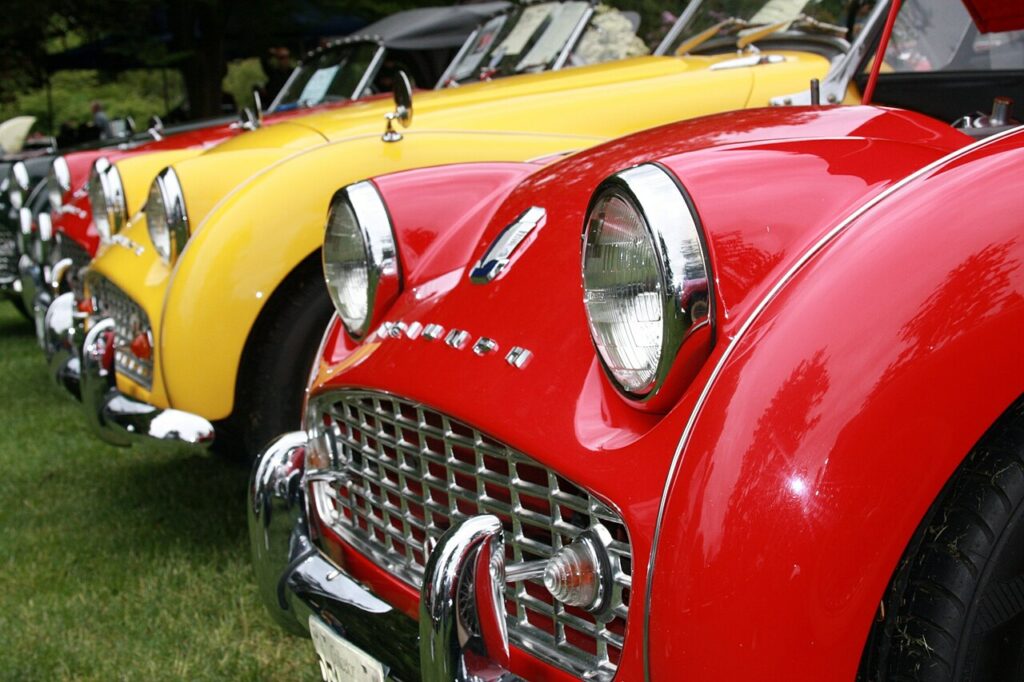
“My favourite is a disc-braked, ‘narrow-mouth’ TR3 [up to mid-1957]; I prefer the design, and the discs give more stopping power in modern traffic,” Simon advises. “There’s enough room to retro-fit a TR4 synchro ’box, and it would look suitably period. The styling is really subjective; some people prefer the big grille of the TR3A – and it was the best seller, too.”
He continues: “Ultimately, you buy on condition, and it depends what’s available for your budget – if a really nice TR2 came up it wouldn’t be that hard for a first-time buyer to upgrade the brakes and ’box. It’s easier to modify a car with a good chassis and body than to sort out the panels on a mechanically sound but scruffy one. Spend £2k on the brakes, not £40k on the body.”
WHAT TO PAY

US – 1956 TR3 Roadster
FAIR: $9900
GOOD: $18,300
EXCELLENT: $31,600
CONCOURS: $46,900
UK – 1956 TR3 Roadster
FAIR: £11,600
GOOD: £14,500
EXCELLENT: £23,900
CONCOURS: £29,500
SPECIFICATIONS

2.0-litre inline-four
Power: 100bhp
Top speed: 105mph
0-60mph: 12 seconds
